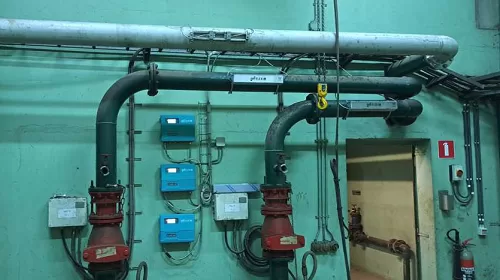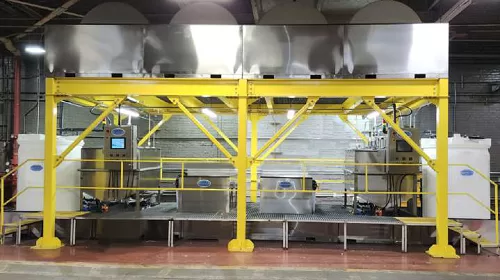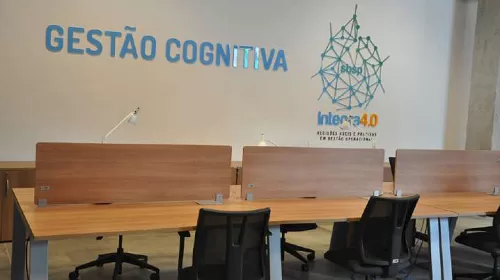WATER CHALLENGES
Increasing population, the effects of climate change, and water scarcity place enormous pressure on organizations to manage water resources safely, securely, and sustainably.
As water is one of the main pillars of the economy and society, it is necessary that its use be based on sustainability and efficiency. However, water scarcity remains a concern in many parts of the world, and finding ways to increase capacity for future generations is critical.
While water availability is a cause for worry in emerging economies, developed countries also face challenges. Water scarcity is not only due to an increase in demand, but also due to management, overextraction of groundwater, or even contamination of freshwater bodies. These issues too can lead to a lack of cooperation on transboundary waters. Challenges can be related to economic sustainability, infrastructure resilience, and rehabilitation, as well as operational efficiency.
Water security is on the top agenda for the United Nations, which recognizes the importance of and access to water as a priority within the 2030 Sustainable Development Goals. The World Bank also announced their new vision; “A World free of poverty, in a liveable planet,” where water plays a central role when it comes to achieving liveability. Liveable means a world without conflict, with access to clean water, clean energy, and clean air, and that can respond to poverty.
DIGITAL MATURITY ALIGNS WITH ORGANIZATIONAL MATURITY
One difficulty that the water sector faces is data collection and format standardization to easily implement digital solutions. We are still in the middle of a shift between paper and digital processes. Both paper and digital systems co-exist today in many organizations, requiring time to fully embrace digitization.
Challenges always depend on the way that we adapt to change. Either you see change as an opportunity to learn and grow or you see change as a problem that will give you more work, on top of the work that you are already asked to do. Change must be an incentive and opportunity to learn and grow.
Advancing the world’s water infrastructure is key to addressing climate change, meeting SDG goals, and meeting the business goals of organizations and engineering firms globally.
CONNECTING INFRASTRUCTURE
The world becomes more digital each day. Therefore, to ensure that water infrastructure meets sustainability and resiliency goals, water sector leaders must embrace robust digital solutions that can provide meaningful solutions to solve the most challenging issues. It is critical that data and multiple technologies integrate, as everything is interconnected. Working in silos creates data-sharing gaps and inefficiency in operations, as well as makes it very hard to comply with standards. Without digital solutions, it is difficult to understand what the data is saying, leading to potentially missing the important advantage of the integrated digital information sharing in agile workflows.
Enabling water engineers and leaders to design, plan, construct, and operate water, wastewater, and stormwater infrastructure will improve quality of life. Bringing water to people is giving them the most basic human need for health and well-being, and technology plays a key role. In fact, the advancement and implementation of digital solutions are improving the design, build, and operation of efficient and resilient water and wastewater infrastructure by connecting technologies, systems, and workflows across the water engineering and operations lifecycle.
However, despite various global efforts, universal access to water is still lagging, with billions of people lacking safely managed drinking water, sanitation, or basic hygiene. On the other hand, utilities face stress created in water sources such as aquifers and reservoirs. Aging infrastructure that treats and delivers clean water, collects and treats wastewater, and manages stormwater, surface water, and groundwater, puts these critical resources at risk. Climate change and climate actions add impacts, with a need to strengthen our resilience.
Countries, cities, and communities are under great pressure to manage their water safely and securely and with foresight to make better decisions. Water is one resource for which no substitute exists, yet climate change (flooding and droughts), burgeoning populations, and shifting lifestyles have all placed pressure on this critical resource.
To address these challenges in a collaborative and transparent environment, it is paramount to develop digital solutions for infrastructure intelligence. These solutions must be open and interoperable, able to connect to different technologies, such as IoT and analytics, bring data and information from different sources, and leverage artificial intelligence (AI) and other advanced methods. They will allow organizations to grow and evolve, as the requirements and standards change.
DIGITAL TWIN SOLUTIONS – SUCCESS STORIES
The skills shortage in the industry is real. Experienced people are retiring and taking their knowledge with them. Capacity can be increase by leveraging technology to improve efficiency, and productivity will increase through better automation, collaboration, and improved digitization.
With an interoperable and open digital solution, Bentley relies on leveraging the value of digital data, such as the iTwin Platform, which is the foundation for building infrastructure digital twin SaaS solutions to design, build, and operate infrastructure assets.
A lot has been said about AI, but what will revolutionize the water industry will be how it is implemented in our technologies to understand data, analyze, and simulate scenarios.
The applications and solutions that are producing some outstanding projects in the water sector are showcased each year at the Year in Infrastructure and Going Digital Awards in Infrastructure event. Two examples that were included at this year’s event are:
- The EchoWater Project in Sacramento, which won the Going Digital Award in the Water and Wastewater category, includes upgraded infrastructure to facilitate the treatment of approximately 135 million gallons of wastewater per day, providing a safe and reliable supply of recycled water. Consisting of 22 individual projects centered around constructing a sprawling complex for removing 99% of ammonia and 89% of nitrogen, planning and managing the design of these simultaneous components on an active wastewater treatment facility presented significant challenges. The team used Bentley’s SYNCHRO and iTwin to develop construction solutions and a digital twin, anticipating and mitigating potential obstacles and shutdowns, and providing optimal and timely situational awareness of cost and schedule performance. Working in a connected digital visual environment enabled the designers to complete the project USD 400 million under budget. The project cost savings are being used to fund California’s Harvest Water program, providing recycled clean water to the Central Valley’s agricultural industry.
- As part of the India government’s programs to provide safe, reliable drinking water and eliminate gravity-fed distribution networks, Ayodhya Authority contracted Geoinfo Services to plan and design a pressurized city water supply scheme. The new pressurized network provides 24-hour access to clean water and reduces nonrevenue water by 35%. Geoinfo faced challenges modeling the hundreds of network pipes and nodes that previous software could not accommodate. To convert Ayodhya’s existing system to a reliable, energy-efficient network, Geoinfo needed advanced hydraulic modeling and digital twin technology. The optimized network is saving USD 1.5 million in annual operating expenses and USD 46,025 in annual energy costs, while eliminating 347 tons of carbon emissions per year. The digital twin facilitates virtual monitoring with 95% confidence to improve decision-making and mitigate emergency situations.
ACT WITH PURPOSE
As the world grows in population with the increase in climate challenges, it is crucial to develop interoperable technologies that can connect cities and natural resources, such as water. The industry must consider implementing the most effective solutions, which will enable them to meet their targets and shift to a circular economy, constituting an opportunity to reinvent themselves.
With so many variables and challenges, which range from digital advancements of operations to rethinking water reuse and recovery and intersecting with energy challenges, the industry still has a long way to go before it can claim success of this circular interoperability.
We live in an era of buzz words and trends. To become meaningful, the industry needs to act with purpose—where climate action is not a burden, but instead it is an opportunity to rethink and rebuild a more sustainable, resilient, and water-wise world.
Author’s Bio:
Cecilia Correia is a senior water solutions manager at Bentley Systems. She has 18 years of experience in the water sector, having worked in different areas, such as governmental river basin administration, engineering consultants, water utilities, and software providers for water solutions. She also has experience in consultancy, design, modelling, and sales as part of her competencies in her professional journey. Today, she is part of Bentley’s water team, with a focus on digital solutions and partnerships, and aims to support empowering water utilities to achieve their strategic goals in water efficiency.





